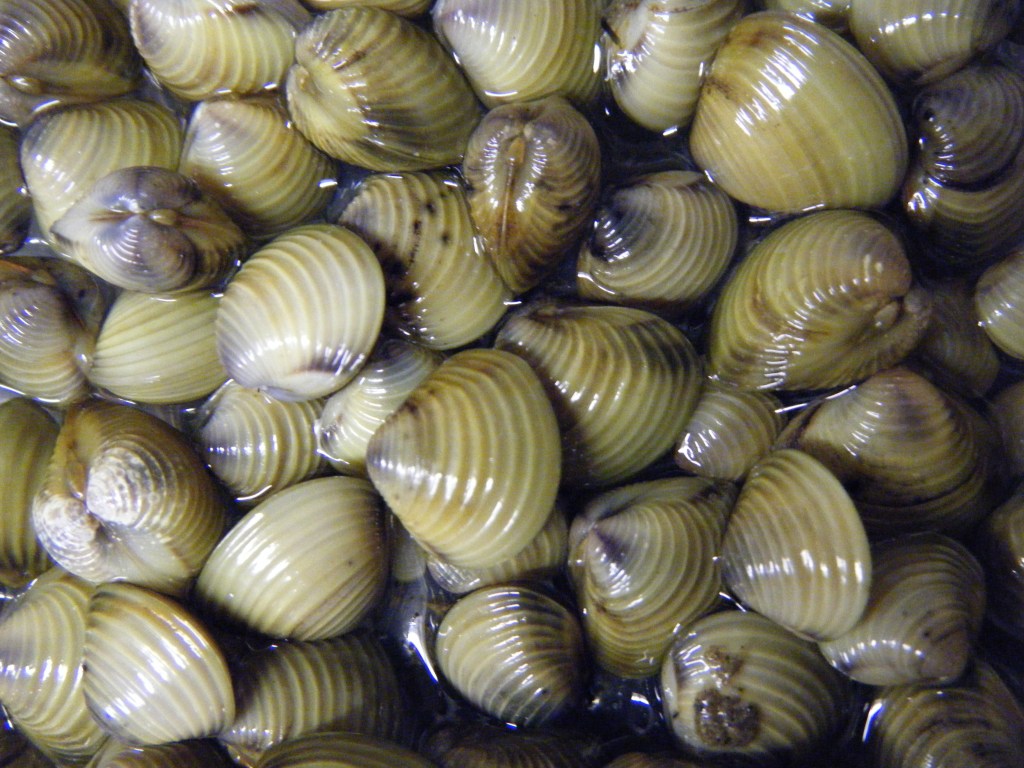

Vermont officials have confirmed the presence of the invasive golden clam in Lake Champlain, bringing the total count of aquatic, nonnative invasive species in the lake to 52.
“It’s disappointing, but it is not surprising,” said Meg Modley, aquatic invasive species management coordinator for the Lake Champlain Basin Program. Officials found the clam in the Lake Champlain canal in 2008, Lake George in 2010 and Lake Bomoseen in 2016, and all of those water bodies connect to Lake Champlain.
The species — which is also known as the Asian clam and the basket clam — can be destructive to infrastructure, clogging irrigation systems, hydroelectric facilities and reservoirs, Modley said. While the clam can edge out native species, there is not yet evidence of the clam causing serious ecological damage in the Northeast.
“It’s very likely that they are outcompeting native species and changing what the composition is in the sediments or that benthic lake bottom community,” she said.
A volunteer found the clam two weeks ago while surveying the shoreline in Whitehall, New York, along the lake’s southern end, according to Modley. Then, officials with the New York Department of Environmental Conservation returned to the location and found one other clam and a half shell.
“We’re going to go and take a much closer look and see if we can find them in other locations in the south lake, and figure out how widespread they might be within Lake Champlain,” Modley said.
Originally from Asia, golden clams have spread to water bodies around the United States, but many scientists thought the waters of northern New York and Vermont might be too cold for the species to thrive.

At first, there were “a lot of questions about whether or not the species would overwinter, and whether it would do well,” Modley said. “And unfortunately, since the introduction in 2010 to Lake George, the species has spread to many new locations within Lake George, and seems to be overwintering just fine.”
The clams are hermaphrodites, meaning a sole clam can reproduce — and the population can grow quickly.
After the clam was identified in Lake George 14 years ago, Modley said, various organizations in Vermont and New York “threw all of our resources” at an attempt to manage the clam, knowing its establishment there could have broader consequences for the region.

The Lake George Association, the Lake George Park Commission and the Lake Champlain Basin Program collaborated with organizations in the Lake Tahoe area and researchers at the University of California, Davis, because similar to the Adirondack lake, Lake Tahoe has clear waters and is a recreational destination.
The organizations tried a number of control techniques in Lake George, including trying to “suck them up off the lake bottom,” similar to “a dredging operation,” Modley said. They tried putting plastic mats down over the lake bed and successfully killed the majority of adult clams, but not the juveniles, which swim freely in the water.
“We’d go and lift up the mats, and shortly after that, the areas would get recolonized by juveniles,” Modley said.
Controlled experiments in tanks with herbicides and pesticides didn’t work either, she said.
“The clams are very efficient bioengineers,” she said. “They just close up and they wiggle down in the sediments, and they can just hang out there until their sense of that threat goes away. They were exposed for weeks and weeks, and they were fine.”
Dave Wick, of the Lake George Park Commission, said in an interview that attempts to manage the population using the mats were “fairly successful — but, you know, 96% success means 100% failure, because they repopulate exceedingly quickly.”
“At this point, we don’t have a management strategy that will eradicate the clams,” he said. “We can control them, but at a fairly high cost.”
This year, the organization found 11 new sites during its lakewide survey — in total, more than ever before. But the “good news,” Wick said, is that “we still haven’t seen a significant ecological impact.”
The clams don’t typically populate areas where a lot of people are recreating because that activity stirs up sediment, creating an unfavorable environment for the filter feeders, but “right outside the swim ropes, you can find them in abundance,” Wick said.
“We haven’t found significant water quality impacts,” he said. “We’ve seen very, very localized water quality impacts as they die off at the end of the year — they release nitrogen, urea — but it really hasn’t shown up in any way that’s significant.”
The picture is similar in Rutland County’s Lake Bomoseen. After officials discovered the clams there, they performed extensive surveying and found that the population ”was much larger than something that we felt we could effectively manage,” Modley said.
So far, they haven’t significantly damaged Bomoseen’s ecosystem, Modley said, though she warned they “likely have impacts that we can’t exactly measure.”
Modley encouraged Vermonters to prevent the spread of the golden clam and other invasive species by closely following baitfish regulations and making sure boats and other recreational equipment used in the water are clean, drained and dry before moving them to different water bodies.
Vermonters can also volunteer to survey Lake Champlain and other water bodies for invasive species through the Department of Environmental Conservation.
Read the story on VTDigger here: Invasive golden clams found in Lake Champlain .

